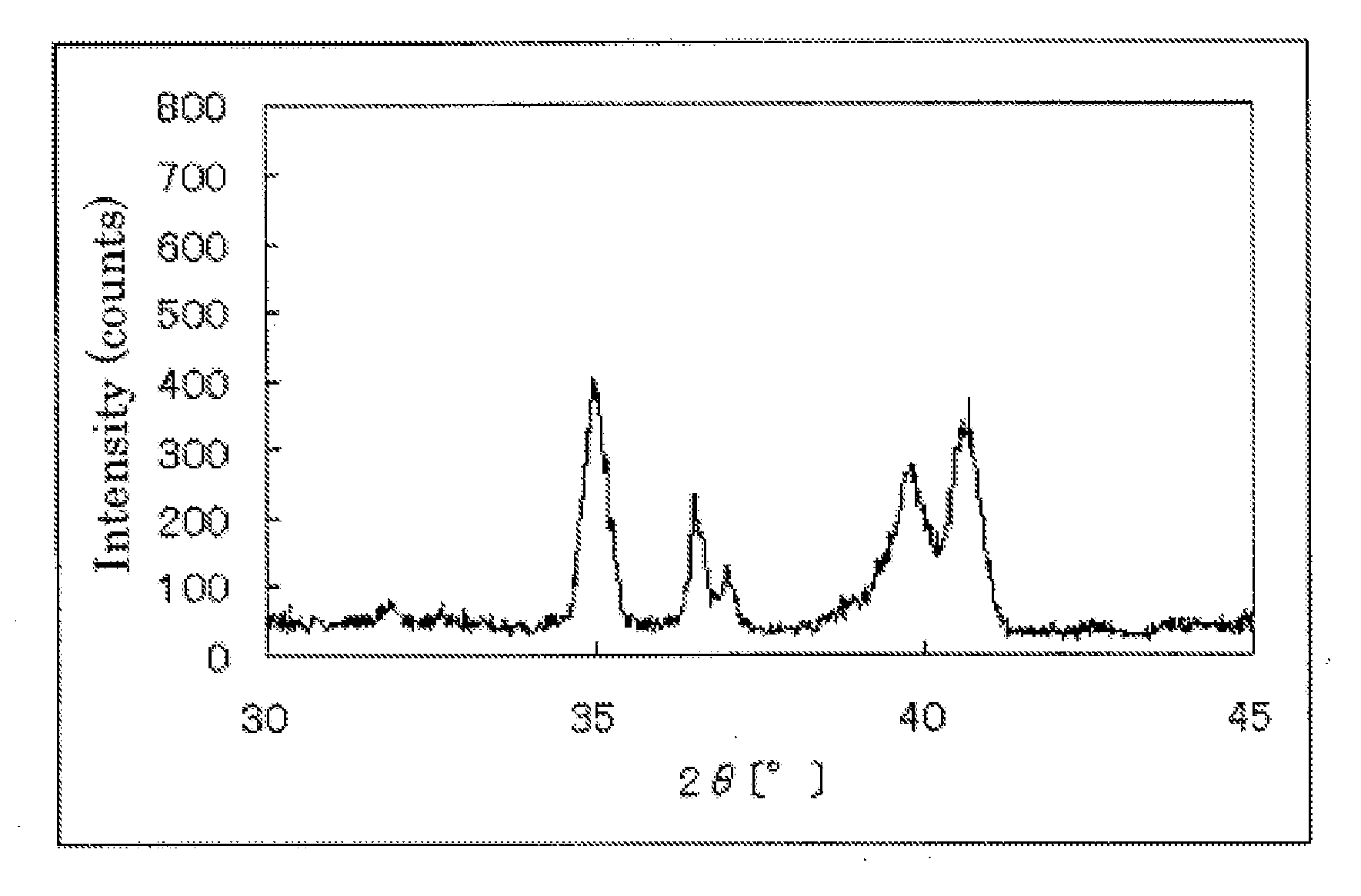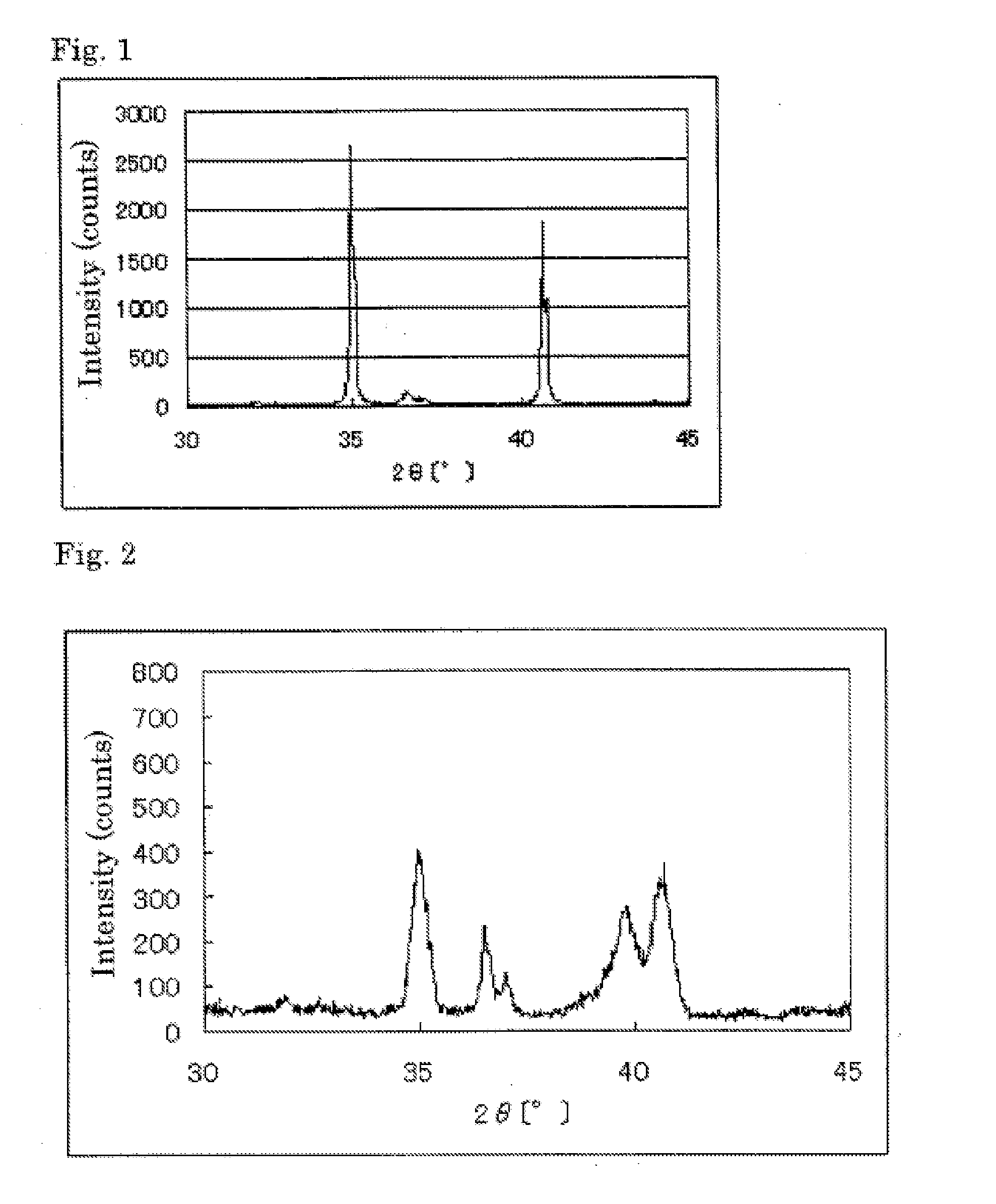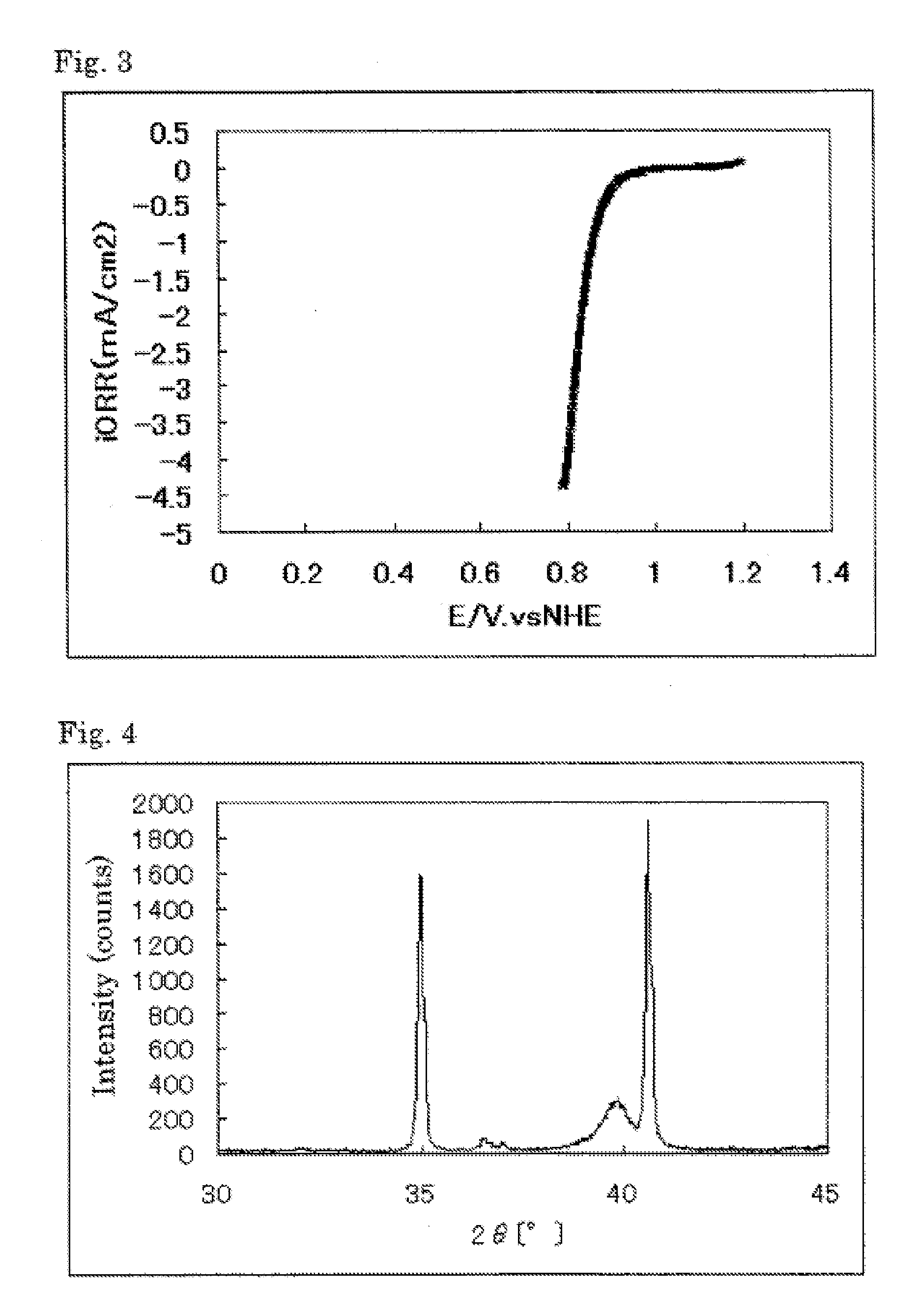Catalyst carrier, catalyst and process for producing the same
a catalyst and carrier technology, applied in the direction of catalyst carriers, physical/chemical process catalysts, cell components, etc., can solve the problems of low heat resistance of carbon, the inability of catalysts obtainable by using the carrier carbon to secure sufficient catalytic ability, and the technical limit of the particle diameter of the carrier carbon, etc., to achieve excellent heat resistance and high catalytic ability without increasing the specific surface area
- Summary
- Abstract
- Description
- Claims
- Application Information
AI Technical Summary
Benefits of technology
Problems solved by technology
Method used
Image
Examples
example 1
1. Preparation of Catalyst Carrier
[0162]4.96 g (81 mmol) of niobium carbide, 1.25 g (10 mmol) of niobium oxide and 0.54 g (5 mmol) of niobium nitride were fully mixed and heated in a nitrogen atmosphere at 1600° C. for 3 hr to prepare 2.70 g of niobium carbon nitride. The resulting sintered niobium carbon nitride was pulverized by a ball mill.
[0163]1.05 g of the niobium carbon nitride was heated in a tube-like furnace while feeding an argon gas containing 1% by volume of oxygen gas at 800° C. for 1 hr, and thereby 1.12 g of a niobium oxycarbonitride (hereinafter referred to “catalyst carrier (1)”) was prepared.
[0164]The powder X-ray diffraction spectrum of the resulting catalyst carrier (1) is shown in Table 1. At the diffraction angle 2θ in the range of 33° to 43°, four diffraction line peaks were observed. The element analysis results of the catalyst carrier (1) are shown in Table 1.
TABLE 1The element analysis results of the catalyst carrier (1) (wt % ; the parenthetic number is a...
example 2
1. Preparation of Catalyst (Method of Synthesizing a 2.5% by Weight Platinum Catalyst)
[0181]0.975 g of the niobium oxycarbonitride (the pulverized one was used: particle diameter of 100 nm) prepared in Example 1 was added to 100 ml of distilled water and shaken for 30 min by an ultrasonic cleaner. The suspension was put on a hot plate and kept at a liquid temperature of 80° C. with stirring. To the suspension, sodium carbide (0.043 g) was added.
[0182]To 25 ml of distilled water, 67 mg (0.134 mmol: 25 mg in terms of the platinum amount) of platinic chloride (H2PtCl6.6H2O) was dissolved to prepare a solution. The solution was slowly added to the suspension over 30 min (the solution temperature was kept at 80° C.). After completion of the dropping, the suspension, as it is, was stirred at 80° C. for 2 hr.
[0183]Next, 5 ml of a formaldehyde aqueous solution (trade one: 37%) was slowly added to the suspension. After completion of the addition, the suspension, as it is, was stirred at 80° ...
example 3
1. Preparation of Catalyst carrier
[0204]5.88 g (56 mmol) of niobium carbide, 0.87 g (5 mmol) of ferrous acetate and 5.14 g (48 mmol) of niobium nitride were fully mixed and heated in a nitrogen atmosphere at 1600° C. for 3 hr to prepare 10.89 g of iron and niobium-containing carbon nitride. Since the resulting iron and niobium-containing carbon nitride was sintered one, it was pulverized by a ball mill.
[0205]1.00 g of the iron and niobium-containing carbon nitride was heat-treated in a tube-like furnace while feeding a nitrogen gas containing 1% by volume of oxygen gas and 0.8% by volume of hydrogen gas at 900° C. for 6 hr, and thereby 1.24 g of a iron (5% by mole) and niobium-containing oxycarbonitride (hereinafter referred to “catalyst carrier (5)”) was prepared.
[0206]The powder X-ray diffraction spectrum of the resulting catalyst carrier (5) is shown in Table 12. The element analysis results of the catalyst carrier (5) are shown in Table 3.
TABLE 3Example 3NbFeCNOCompositionNbFeC0...
PUM
| Property | Measurement | Unit |
|---|---|---|
| particle diameter | aaaaa | aaaaa |
| temperature | aaaaa | aaaaa |
| particle diameter | aaaaa | aaaaa |
Abstract
Description
Claims
Application Information
 Login to View More
Login to View More - R&D
- Intellectual Property
- Life Sciences
- Materials
- Tech Scout
- Unparalleled Data Quality
- Higher Quality Content
- 60% Fewer Hallucinations
Browse by: Latest US Patents, China's latest patents, Technical Efficacy Thesaurus, Application Domain, Technology Topic, Popular Technical Reports.
© 2025 PatSnap. All rights reserved.Legal|Privacy policy|Modern Slavery Act Transparency Statement|Sitemap|About US| Contact US: help@patsnap.com



